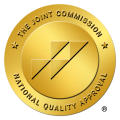Signs of High Functioning Depression in Your Staff
Article Contents
What Is High-Functioning Depression?
High-functioning depression can be difficult to recognize compared to other types of depression. Those who have it tend to be high achievers who hide their symptoms well.1
Depression in the ICD-10 is characterized by ten agreed-upon symptoms, including persistent sadness, fatigue, agitation or slowed movements, low self-confidence, and guilt or self-blame. According to the ICD-10, how many symptoms a patient scores on the depression test determines the level of depression he or she is facing, from mild to major.
High-functioning depression, like other types of depression, is characterized by a persistent low mood and low energy. It is known to be less debilitating than other types of depression, and people who have it appear to live relatively “normal” lives. On the outside, these individuals cope with their symptoms well enough to function at work and in social situations. However, even those who look to be functioning normally may be struggling internally.
Symptoms of High Functioning Depression
High-functioning depression can look different for everyone. The symptoms can overlap with major depression and other types of depression. Some of the common symptoms include:
- Persistent sadness
- Being generally unhappy in life
- Fatigue
- Low energy
- Tendency to be self-critical
- Low self-esteem
- Sleep issues (too much or too little)
- Overeating or undereating
- Feelings of hopelessness
Is High-Functioning Depression an Official Diagnosis?
A difficult aspect of this condition is that there is no “high-functioning depression” as an official diagnosis in the Diagnostic and Statistical Manual of Mental Disorders (DSM), the resource most used by professionals to diagnose mental health disorders.
Depression in the DSM-5 is diagnosed when someone presents a depressed mood every day or nearly every day for at least two weeks. The individual must also show a lack of interest or pleasure in anything, as well as three or more other depression symptoms. High-functioning depression, though not in the DSM-5, is sometimes used interchangeably with dysthymia, or persistent depressive disorder (PDD). PDD is known as chronic, low-grade depression that generally lasts at least two or three years.2
For someone to be diagnosed with PDD, they must have a low or dark mood on most days, as well as two additional depression symptoms such as sleep problems, poor concentration, or feelings of hopelessness.3 Some may find it useful to self-diagnose using an online depression test such as Beck’s Depression Inventory. An individual can also see a therapist who offers other diagnostic tools.
Depression in the Workplace

Less than one-third of Americans are happy with their job.4 Recognizing depression in the workplace is essential for supporting employees and improving wellbeing and work performance.
What Causes Depression in Employees
Employees may feel depression at work for many reasons, including:
- Feeling overwhelmed by work
- Unreasonable demands
- Working a job that is not the right fit
- Inadequate pay
- Workplace bullying
Depression at work can also be caused by factors unrelated to work. Bipolar depression may be easier to spot in the workplace as it is characterized by extreme swings of mood and energy.5
How Depression Impacts Work Performance
Work performance can be significantly impacted by employees with depression. Even in those with high-functioning depression, the symptoms that present themselves can negatively affect concentration, work attendance, productivity, and morale.
This disorder may also cause employees to take on more work than they can handle. Many who have the condition strive to over-exceed even while experiencing depression symptoms. Employees with high-functioning depression may exhibit the following signs:
- They are constantly fatigued
- They withdraw from teams
- They are often late to work or meetings
- They are absent from work often
- They have low or unstable moods
- They take on too much work (as an attempt to mask feelings by staying busy or to compensate for feelings of low self-worth)
What Can Companies Do to Help Employees with Depression?
Raising awareness about depression is the first step to help those who struggle with the condition. Mental health issues are no different than physical health issues—they must be addressed to get better.
There are several ways to educate employees, including offering depression tests, like Beck’s Depression Inventory, and other health screenings. Beck’s Depression Inventory is self-scored, so employees could keep their scores confidential if desired. It also utilizes a tiered scoring system that would help employees understand their level of depression, from mild to severe. Employers can also include depression screenings in HRAs and EAP programs.
Ensuring a positive and productive workspace helps employees dealing with depression. Some actions that companies can take to aid employees struggling with depression include:
- Allowing more flexible schedules
- Emphasizing good work-life balance
- Reducing overwhelming workloads
- Reducing the stigma around mental health issues
- Facilitating conversations and activities to discuss mental health
- Focusing on positive goals and outcomes
- Serving as a competent and positive leader
Treatment Options
Raising awareness and improving work conditions can help employees dealing with depression. Other treatments such as therapy, depression medications, and peer support groups can make a difference. Often, early intervention is key in helping those affected by depression. 6
Depression medications can be prescribed by a doctor or psychiatrist and help alleviate symptoms of depression. Common antidepressants include:
- Fluoxetine (Prozac)
- Sertraline (Zoloft)
- Citalopram (Celexa)
- Paroxetine (Paxil)
Many depression medications take four to six weeks to work, so some may find more immediate relief through cognitive-behavioral therapy or other types of psychotherapy. Such therapies are often covered partially or entirely by employee insurance.
Workplaces that provide green spaces and fitness centers for their employees may be able to reduce depression symptoms, as physical activity and green spaces are proven to improve a person’s wellbeing.
Additionally, encouraging employees to speak to others about their struggles in the form of peer support groups can aid in minimizing depression and high-functioning depression.




